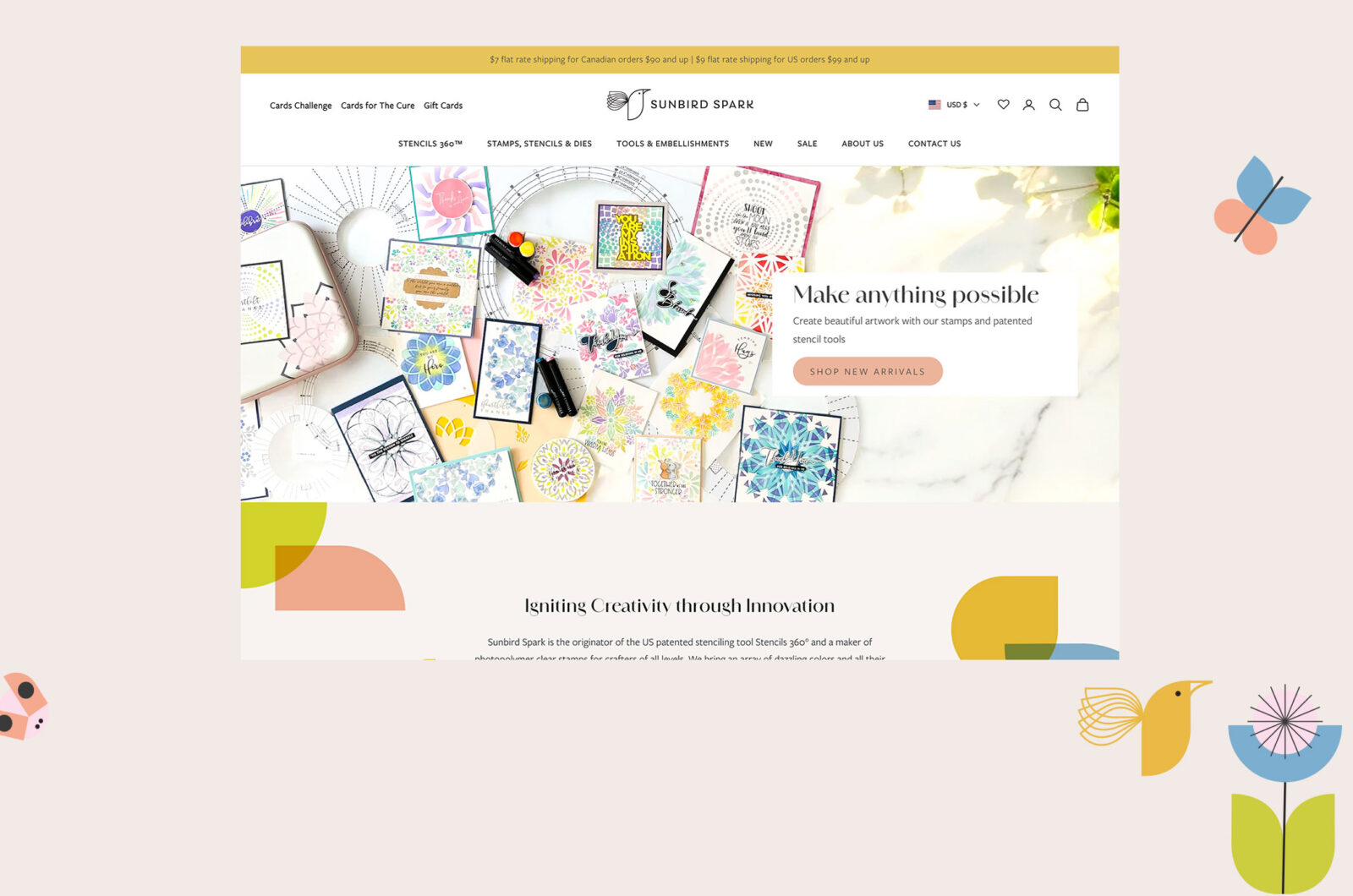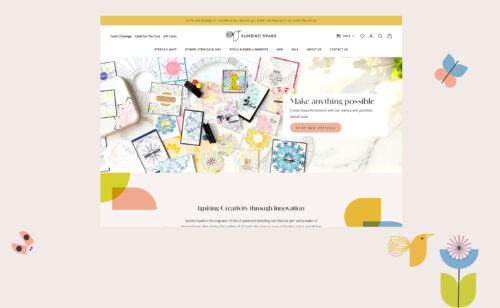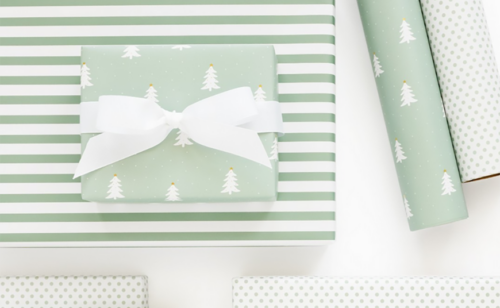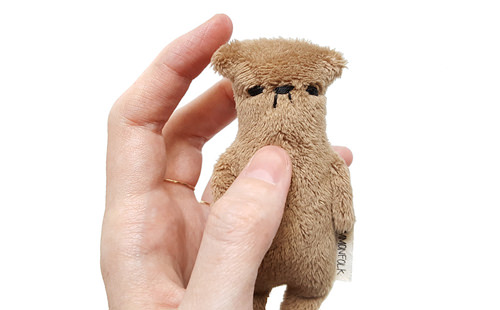
I have always been interested in how to grow a handmade business while still enjoying it, and I’m particularly intrigued by those handmade businesses that have gotten so successful that making each thing by hand becomes unsustainable for one person. There are so many options when you hit this point: burn out and give up, seek a manufacturer, hire local handcrafted help, change your product type to something less intensive – what to do?
Here is one story of a maker who made her business too big, and what she did to satisfy her customers, her own creativity, and grow her business to support her family. Natalie and her team handcraft the sweetest, minimalist bears in Portland, OR. This is my interview with her. My questions are the bold text, and Natalie’s answers are the quoted replies.
What do you create and what makes it so darn special?
I make stuffed bears (and occasionally, other animals). I think what sets them apart is that they’re not like anything else you can find in stores or even in the handmade market – the design of my bears is based on simplicity, minimalism, and comfort. I’ve never seen anything else that looks like them, and that sense of originality makes me proud.
How long have you been in business? What can you pinpoint as a turning point to your business’ popularity?
I’ve been in business since Fall of 2014. Commonfolke started out as Dainty Rags, a baby blanket shop. I made a bear one day for my son and posted it to my personal Instagram, and my friends encouraged me to sell them in my shop. In 2015, I changed my name over to Commonfolk, and then in 2016, I added an “e” at the end. As you can see, things are always evolving!
The point where I realized I was getting pretty popular was when I had almost ten employees and couldn’t keep up with orders, even with a 4-6 week turnaround time. My business grew bigger than I expected very quickly, and that forced me to learn everything I could about running a business while still sewing, managing, shipping, and doing everything else for the business as well.

How often did you release products before hiring help, and how quickly did they sell out? Was your shop ever empty?
Before I hired anyone, I would release about 20-30 bears a week. Every time I listed, they were gone within minutes. My shop was ALWAYS empty, and this confused a lot of my customers. This is when I switched over to pre-orders.
For weekly tips like this, subscribe to our newsletter
"*" indicates required fields
How have you adjusted pricing, process, and methods as demand outpaced supply? How did your seamstresses and any other changes affect inventory and sales?
Ohhh yes. This has been the toughest part of the business for me. I had to change everything. Pricing went up (it was easy to not pay myself for my work, but once I had help I realized my costs were very high!). Materials got more expensive and durable. Everything was made in a very specific process involving several people – my seamstresses, myself, and my embroiderers. Things would get delayed if one issue would happen with any of us.
It took months of trying to find the right team, staying up til 4am every night working (then waking up with my two kids in the morning), and desperately trying to do it all and keep customers happy. This period was tough, I spent most of my time sewing or learning about taxes, business licenses, trademarks, copyrights, etc and very little time creating.
I’m happy to say that after all that hard work and stress, I’ve been able to get to the point where my bears are ready to ship and I keep an inventory. I really prefer it this way, though I do sometimes miss the thrill of seeing bears disappear within seconds of being listed!
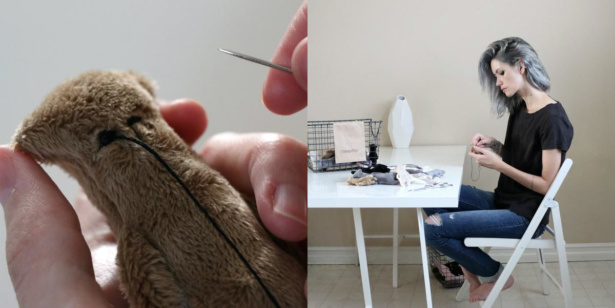
What changes did you make to get to where you are now, with inventory in stock? What roles have you hired for and why does it work?
There are six of us now, yes. Well, two of us that are Commonfolke (myself and my husband – but 99% of it is me), and four contracted helpers. We have one seamstress, two embroiderers, and one assistant.
I mainly ask other moms to work with me, and I love that. Right now I have a few of my friends and one nice woman I met when I moved to Portland working for me on each batch of bears. I have tried out a LOT of people though, and my team of contractors has dwindled down from many people (in many different states!) to just a small group. That was always very hard – either having wonderful people stop working with me because they misunderstood their tax obligations and were surprised, or because they moved away, or because they couldn’t quite replicate the look of my bears perfectly. Hiring people to help has been one of the most stressful aspects of owning a business. All the other small business owners I know have had difficulty with this, mostly because it’s hard to find people with the amount of passion you have for your own product.
When I first contracted everyone to help, it was very disorganized. The past six months have been spent figuring out everyone’s strengths, schedules, and then finding a way that everyone can be really efficient at what they do. Once that was done, I put everyone in crazy mode and we worked incredibly hard to do as much as we could to make more bears than we were selling, so we would have an inventory. Once I had hundreds of bears just waiting around to be sold, I closed the shop for a while, notified my customers that bears would be ready to ship at a certain date, and then worked on getting all the inventory entered into the website. I now handle all aspects of the business (bookkeeping, social media/marketing, website maintenance, ordering supplies, photography, etc), and I hand number every bear and ship them. I also can obviously do any other job – so I often machine sew or embroider as needed. My husband sews bears closed and helps with shipping. I still need to hire more help, but it feels good to have a pretty good team right now.
Have you found ways to sell or share your work in a more widespread way, or is this something you’re considering?
I’ve just recently gotten to a point where I have a great team (myself, my husband, and four others) who all work hard enough to where I can focus my energy on new ideas. I’ll be coming out with some printed fabric dolls soon, and I have plans for many more things to come.
Where do you promote your work most? How do you sell it? Do you need to do any marketing or promotional work anymore?
I do most of my promotion on Instagram. I’ve found a wonderful community of other makers that has been absolutely essential in my own success. We all work together to build each other up, it’s incredible. I sell on Shopify and via wholesale in a number of high end boutique shops. I find I have enough promotion through my own marketing efforts and those of my stockists to sustain my business. That might change, though!
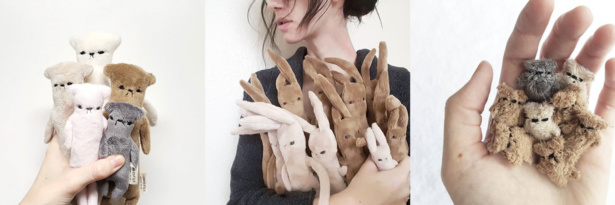
What do you like about how you sell your handmade goods? What about your selling process is not ideal for you?
I like that I can reach customers directly. I think that’s important when your items are handmade. The connection is really special. My least favorite part though is probably the business side of things. When I first started I basically wanted to give bears away (and with my prices then, I nearly did!). Now I have to factor in so many costs that need to be covered, and it takes a little of the magic out of the experience for me. It’s necessary, but I don’t love it.
Is your business financially sustainable?
Finally, yes. It’s getting there. I am, by no means whatsoever, wealthy. But I am humbled and grateful to admit that Commonfolke has supported my family for months. I remember telling my husband that I would be happy if I just made a couple hundred dollars a month to have enough to cover my own personal bills. Now, I’m making enough to where my husband can work almost full time alongside me. It’s absolutely amazing.
How do you see your business growing in the next few years? Do you intentionally keep it small? Would you like to expand? If so, how?
I really hope that in the next few years, I can let go of some more responsibilities. I do love the “small” part of this small business, but the reality is that I have a very rare and severe, chronic migraine condition that causes an array of different neurological problems on a daily basis. My health has gotten in the way a lot, and I have found that I absolutely have to branch out and expand or my business will not exist.
I hired my first employee because I became unable to use my sewing machine without it making me very sick. Now, I can’t really imagine going back to the way it was with me sewing everything myself. It has been SO hard to let go of control, but I found people that are extremely passionate about my vision and dedicate their time to getting it just right.
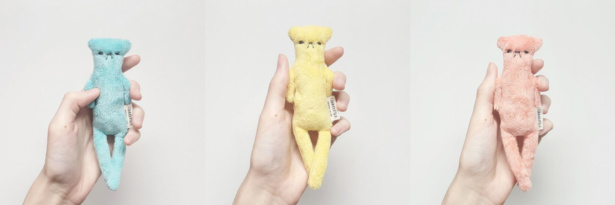
What advice or encouragement would you give to other handmakers?
My advice is to just stay open minded. Your business will always change. Be open to going with the flow of what your business needs at that time. There will be good months and bad, and being able to keep up with it and stay creative is the goal for anyone who has a handmade business. Do things your own way, even if that means not working for a week or two and just cuddling with your kids or taking time away with your husband or friends. It’s important to maintain yourself and your happiness!
We hope you enjoyed this Interview with Commonfolke! Natalie is such an inspiring business owner; be sure to follow her Instagram: @commonfolke.
A Newsletter That Goes Beyond Shopify 101
It’s easy to find beginner info about ecommerce online. If you’re past that? Subscribe to our newsletter for advanced strategies and need-to-know info for established shops. You'll get:
- Weekly tips to help you market and sell your products
- Updates when there is news that may impact your site
- Round ups of interesting links and info for brands
- Invites to our live trainings and webinars
- Instant access to our past emails
"*" indicates required fields
Related Posts
Let's take your online shop to the next level
The Shopify websites we design have a reputation for substantial improvements to ecommerce conversion rates and online sales. Let's talk!

